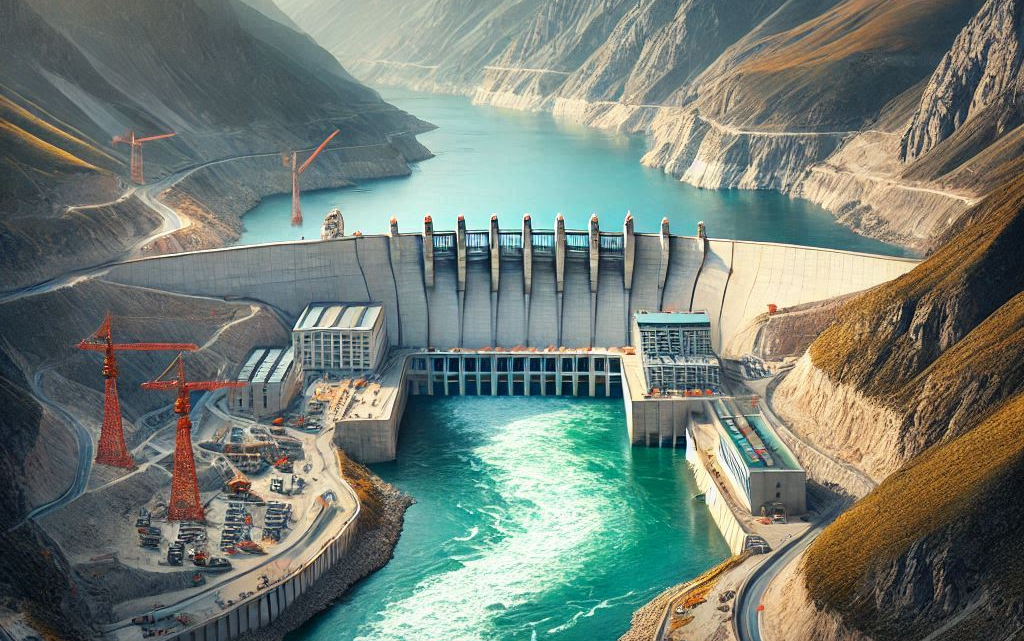China’s bold leap into hydro-electric power – the biggest dam in the world
China is on the brink of revolutionising global hydropower with its decision to construct the world's largest hydroelectric dam on the lower reaches of the Yarlung Zangbo River in Tibet. A project of this magnitude brings with it not just engineering marvels, but also geopolitical, ecological and economic implications. Without doubt, it is a project likely to have a massive impact across the whole region – writes John Ridgeway.
The proposed dam on the Yarlung Zangbo River, known as the Brahmaputra River in India, is estimated to generate an unprecedented 300 billion kWh of electricity annually. This would dwarf the output of the Three Gorges Dam, located on the Yangtze River and currently the largest hydropower dam in the world, with a capacity of 88.2 billion kWh annually.
China’s state-owned Power Construction Corporation of China (PowerChina) provided the initial estimates in 2020, positioning the project as a cornerstone of China’s strategy to meet its carbon neutrality objectives. The dam is expected to serve several critical roles by dramatically boosting China’s renewable energy capacity and reducing its reliance on fossil fuels.
In addition, the project is poised to invigorate local industries, provide employment opportunities in Tibet and enhance regional infrastructure. It also aligns with China's 2060 carbon neutrality target and its 2030 carbon peak objectives, as outlined in its Paris Agreement commitments.
Engineering challenges
However, the region’s rugged terrain and high-altitude environment present formidable engineering challenges. Building a structure of this scale in a seismically active zone with extreme weather conditions requires cutting-edge technology and innovation.
The financial commitment to this endeavour is unprecedented. While the Three Gorges Dam cost an estimated CNY254.2 billion ($34.83 billion) by its completion, the Yarlung Zangbo project could see total investments surpassing CNY1 trillion ($137 billion), according to reports by the South China Morning Post. This would make it one of the most expensive infrastructure projects ever undertaken globally.
Tibet’s hydropower potential accounts for over one-third of China’s total capacity, so this project could transform the country’s economy, creating jobs and stimulating growth in the region. Local industries, from construction to ancillary services, are expected to benefit significantly.
In spite of concerns, Chinese officials assert that the dam will have minimal environmental impact. However, the full ecological consequences remain unclear, particularly concerning river ecosystems, biodiversity and local communities. Lessons from the Three Gorges Dam—which faced criticism for its environmental and social impact - highlight the importance of comprehensive environmental assessments and mitigation measures.
The Yarlung Zangbo River flows downstream into India and Bangladesh, where it is a vital lifeline for millions. Both nations have expressed concerns over potential disruptions to water flow and ecological stability.

India, already wary of China's upstream activities, views the dam as a potential geopolitical weapon. A sudden release of water or modifications to the river’s flow could pose significant risks to downstream populations and agriculture.
Bangladesh, located at the river's delta, relies heavily on the Brahmaputra for irrigation, fishing and water supply. Any changes upstream could have cascading effects on its water security and economy. To address these concerns, international cooperation and transparent communication between China and its neighbours will be essential.
Hydropower and China’s green energy goals
China is the global leader in renewable energy production, particularly in hydropower. The Yarlung Zangbo project is part of a broader strategy to transition from fossil fuels to clean energy. The Three Gorges Dam, currently the largest operational hydropower project in the world, contributes significantly to China’s electricity grid. China also has over 24,000 hydropower plants, generating 1,356 terawatt-hours annually, accounting for about 20% of the country’s electricity.
China’s renewable energy portfolio extends beyond hydropower to include solar, wind and nuclear energy. Recent initiatives include the Tengger Desert Solar Park, one of the largest in the world, with a capacity of 1,547 MW. Rapid expansion in offshore wind farms, with plans to generate 100 GW by 2030 are also being planned.
China is not alone in using hydropower for sustainable energy. The Yarlung Zangbo project shares similarities and contrasts with initiatives in other parts of the world. Ethiopia’s GERD on the Blue Nile has sparked tensions with downstream nations Egypt and Sudan. Like the Yarlung Zangbo project, it highlights the geopolitical complexities of transboundary rivers.
Norway, deriving over 90% of its electricity from hydropower, demonstrates how careful planning and environmental stewardship can minimise impacts while maximising benefits. Furthermore, one of the largest hydropower projects in the world, Itaipu serves as a model for international cooperation between Brazil and Paraguay.
Addressing challenges
The Yarlung Zangbo project, while ambitious, faces several criticisms. As already mentioned, large dams can disrupt aquatic ecosystems, displace communities and alter natural water flow. Building in seismically active zones increases the risk of structural failure and associated disasters and large-scale projects often require the relocation of communities, raising ethical concerns.
While hydropower remains a cornerstone of China’s renewable energy strategy, diversification is key to a sustainable future. China’s solar initiatives, such as the Golmud Solar Park in Qinghai, are setting global benchmarks for scale and efficiency. Advances in battery storage and smart grid technology are also ensuring that renewable energy is efficiently integrated into the national grid.
With this background in mind, we can see that the Yarlung Zangbo project represents both an opportunity and a challenge for China. While it promises to redefine hydropower and bolster green energy goals, it also demands a nuanced approach to environmental sustainability and geopolitical diplomacy.
It will require regular updates and open dialogue with downstream nations to alleviate concerns. Rigorous impact assessments and mitigation measures to protect ecosystems will also be needed as well as using global expertise and best practices to ensure the project’s success.
China’s ambition to lead the world in green energy is commendable, but the true test lies in balancing progress with responsibility. The Yarlung Zangbo project, if executed thoughtfully, could serve as a global model for sustainable development and renewable energy innovation.
In the face of climate change, projects like these are vital to securing a sustainable future. However, they must be approached with care, ensuring that economic growth does not come at the cost of environmental degradation or regional stability. As the world watches China’s next move, the lessons learned here could shape the future of energy for generations to come.
Please note: AI generated images have been used to illustrate this blog
Additional Blogs

What the UK can learn from global construction tech leaders
The UK construction sector stands at a critical crossroads. Mounting pressures - stagnant productivity, acute labour shortages, tightening safety requirements, ambitious carbon-reduction targets and...
Read moreAre architects losing their influence in the digital era?
For decades, architects have been the central creative force in construction, shaping the buildings we see and the way projects are conceived, communicated and delivered. Their role has been...
Read more

Why the word “Innovation” has lost its meaning in construction
“Innovation” has become one of the most overused terms in construction. It appears in the dozens of press releases we receive each day, conference talks and project reports, often without any real...
Read more